
Iranian architecture or Persian architecture is the architecture of Iran and parts of the rest of West Asia, the Caucasus and Central Asia. Its history dates back to at least 5,000 BC with characteristic examples distributed over a vast area from Turkey and Iraq to Uzbekistan and Tajikistan, and from the Caucasus to Zanzibar. Persian buildings vary from peasant huts to tea houses, and garden pavilions to "some of the most majestic structures the world has ever seen". In addition to historic gates, palaces, and mosques, the rapid growth of cities such as the capital Tehran has brought about a wave of demolition and new construction.
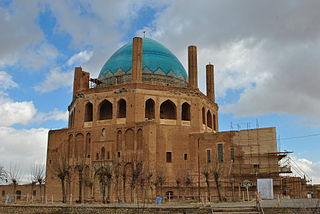
Soltaniyeh is the capital city of Soltaniyeh District of Soltaniyeh County, Zanjan Province, northwestern Iran.

The Dome of Soltaniyeh in Soltaniyeh city, Zanjan Province, Iran, traditionally so called, is a complex of ruins centering on the Mausoleum of the Mongol ruler Il-khan Öljeitü, also known as Muhammad Khodabandeh. The estimated 200 ton dome stands 49 meters tall from its base, and is currently undergoing extensive renovation. Other names the Dome of Soltaniyeh is known by are the Oljeitu Dome, Dome of Sultaniyya, the Tomb of Oljeitu and Gonbad-e-sultaniyeh.
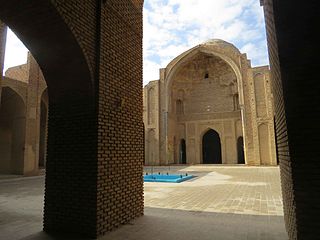
Varamin is a city and capital of Varamin County, Tehran Province, Iran. At the 2011 census, its population was 218,991, and at the 2006 census, its population was 208,569, in 53,639 families.
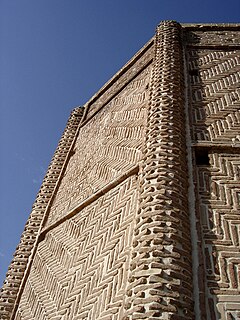
Shebeli Tower is a historical tower in Damavand, a city situated in the Tehran Province of Iran.
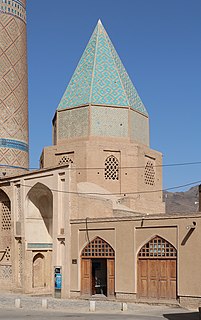
Sheikh Abdussamad Esfahani,, also spelled Abdul Samad, 'Abd al-Samad, or Abd-ul-Samad, was a famous Ilkhanid era Shi'ite Sufi of the 13th century.

Imāmzādeh Ja‘far is a historical mausoleum in Borujerd, western Iran. The tomb contains the remains of Abulqāsim Ja’far ibn al-Husayn, grandson of the Shī‘ah Imam Ali ibn Hussayn.
Iran (Persia) has had numerous capital cities and royal centers throughout its history.
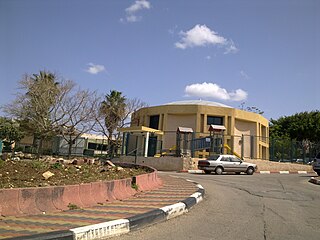
Sheikh Dannun ; also transliterated as Sheikh Danun and Sheikh Danon) is an Arab village located in Israel's Northern District. Since 1948, it has been made up of two old villages – Shaykh Danun and Shaykh Dawud – which were merged, and are now jointly referred to as Sheikh Dannun. Located on a hill overlooking the plains of Acre, both of these old villages were built around a tomb for a sheikh, and share a similar history. It falls under the jurisdiction of Mateh Asher Regional Council, and in 2019 it had a population of 2,887.
Qutb al-Din Muhammad was the Mihrabanid malik of Sistan from 1330 until his death. He was the son of Rukn al-Din Mahmud.

Katale Khor is a cave located in Zanjan Province, Iran. It is situated 120 km south of Zanjan city and is about 410 km from Tehran. The name, Katale Khor, means "mount of the sun". The road from Zanjan to Katale Khor passes Soltaniyeh, an ancient Ilkhanid city.
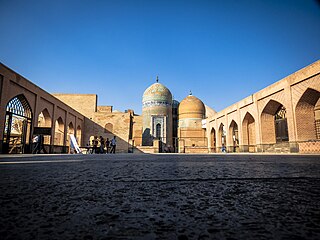
Sheikh Safi al-Din Khānegāh and Shrine Ensemble is the tomb of Sheikh Safi-ad-din Ardabili located in Ardabil, Iran. In 2010, it was registered on the UNESCO World Heritage List. This monument is situated in the Ali-Ghapu area.

The Tomb of Ahmad Sanjar is a mausoleum commemorating Ahmad Sanjar, a Seljuk ruler of Khorasan. It was built in 1157 in the medieval city of Merv in the Karakum Desert in Turkmenistan. Throughout his reign, Sanjar fought off several invasions and uprisings until finally being defeated by the Oghuz. After being sacked by the Oghuz, Merv declined and in 1221, the Mongols attacked it and burned down the mausoleum. It would later be restored by Soviet, Turkmen, and Turkish architects during the 20th and 21st centuries. The tomb is part of The State Historical and Cultural Park "Ancient Merv", a UNESCO World Heritage Site.
Imamzadeh Ja'far is an imamzadeh in Isfahan, Iran. It is located opposite the Esmaeil religious complex. It is one of the pre-eminent structures of the Ilkhanid era. It is related that this emamzadeh is the grave of Ja'far ibn Abī Tālib, a companion of Mohammad. This structure was located formerly in the middle of a large yard, but it is now surrounded by residential buildings. The mausoleum is hexagonal and short and it seems that it had had a pyramid dome before, but its dome was destroyed and another dome like the dome of Chalabioghlou mausoleum in Soltaniyeh was built for it. This Emamzadeh is partly decorated by tiles.
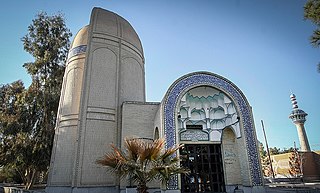
Takht-e Foulad is a historical cemetery in Isfahan, Iran. The cemetery is at least 800 years old. In the 13th century in the Ilkhanid era Takht-e Foulad was the most important cemetery in Isfahan and all of the famous personalities have a mausoleum in this cemetery. Unfortunately all of the mausoleums from the Ilkhanid era, except Baba Rokn ed-Din mausoleum, which is the oldest structure in Takht-e Foulad, have been destroyed. In the Safavid era there were 400 mausoleums in Takht-e Foulad, but there are now only 8 mausoleums from the Safavid era. In the Qajar era a large part of the cemetery was destroyed, but the cemetery hasn't lost its importance and by the end of Pahlavi era it was the most important cemetery in Isfahan. There are 20 structures from the Qajar era and 17 structures from the Pahlavi era in the cemetery. Before the Safavid age the cemetery had been known as Lessan ol-Arz and Baba Rokn ed-Din, but from the Safavid age until now its name is Takht-e Foulad.
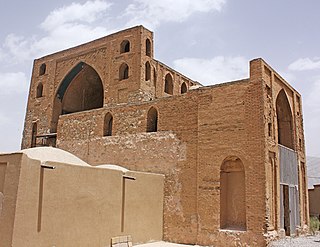
The Pir Bakran mausoleum is a historical mausoleum in Pir Bakran, the capital of Pir Bakran District. The mausoleum dates back to the Ilkhanid era. The names of The Rashidun Caliphs on its inscriptions show that the building belongs the early times of the conversion of mongols to islam and they were still sunnite. The courtyard of the mausoleum is surrounded by walls, small iwans and the arched portals of the main iwan and decorated by some inscriptions with Kufic scripts and stuccoes with the form of flowers and bushes, which are the works of Mohammad Naghash. Mohammad ebn-e Bakran's grave is located behind the courtyard. On the northern side of it, there's a small closed room, which was probably his teaching place. The mausoleum is decorated with stuccoes and tiles.

The Chehel Dokhtaran mausoleum is a historical structure in Kashan, Iran. It is located to the west of Emamzadeh Soltan Mir Ahmad. The mausoleum was built in the Ilkhanid era. Its high simple unadorned dome is the hallmark of the architecture in the Ilkhanid era.

The Zumurrud Khatun Mosque and Mausoleum, also known as the Mosque al Khaffafin, is a historic mosque and shrine located in Baghdad, Iraq. It dates back to the Abbasid era. It is located in Sheikh Maarouf Cemetery in the Karkh side of Baghdad. The site was built by Sitt Zubayda also known as Zumurrud Khatun in 1202, who was mother of the 34th Abbasid Caliph Al-Nasir, and wife of the 33rd Abbasid Caliph Al-Mustadi. She collected the waqf money from madrasas and built her mausoleum before her death, which is located in Karkh.

Melik Ajdar Mausoleum or Jijimli Mausoleum is a mausoleum located in the high mountainous terrain of the Jijimli village of the Lachin District of Azerbaijan. According to the scientific research data, it was built in the 12-13th centuries.

The Madrasa of Amir Sunqur Sa'di, also commonly known as the Mausoleum of (Sheikh) Hasan Sadaqa, is a medieval Mamluk-era madrasa structure and mausoleum in Cairo, Egypt. It was originally built between 1315 and 1321 CE by amir Sunqur Sa'di. Sunqur was forced to leave Egypt in his lifetime and was never buried there, but a sheikh known as Hasan Sadaqa was later buried in it and therefore the building is often known by his name. From the 17th century onward the complex was converted into Mevlevi Sufi lodge and is open today as the Mawlawiyya Museum or Museo Mevlevi.


















